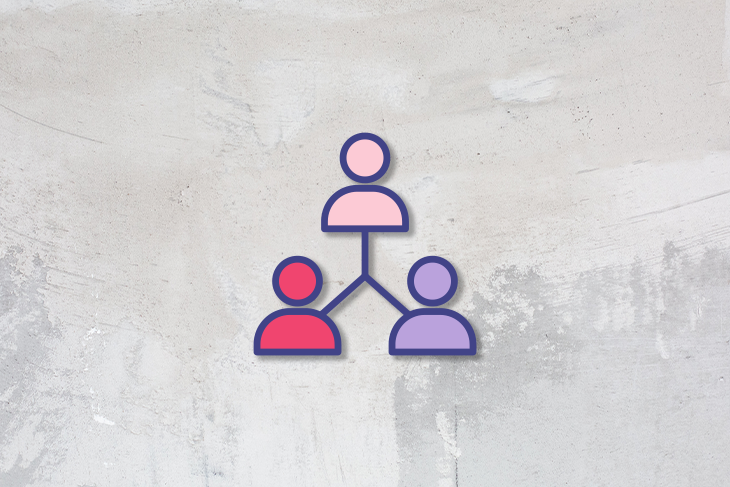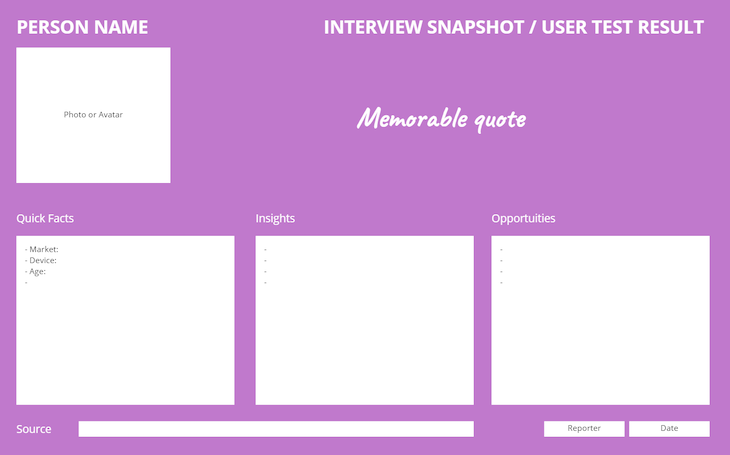Recently, the concept of continuous discovery has been gaining in popularity. The promise of quickly generating insights, validating opportunities, and discovering what to do next is just too tempting to pass up.

But, as usual, the actual execution isn’t as straightforward.
In this article, I’ll cover some actionable insights on implementing one of the cornerstone continuous discovery habits: continuous interviewing.
Let’s kickstart by laying out various benefits that continuous interviewing (that is, interviewing users at least once a week) can bring to your product development culture.
Empathy has always been a tricky topic.
While empathizing with end users is a critical factor in building products, it’s often very hard to pull off. Say you’re a middle-aged man from the U.S. building EdTech products for children in Europe. Empathizing with a 12-year-old girl from the other end of the world isn’t that easy.
However, continuous interviewing makes it way easier. If you talk with these children on a weekly basis, gradually, you’ll develop a deeper understanding of:
Over time, this will help you switch from artificial “let’s think about our user’s perspective” to actually empathizing and understanding your users at all times.
It’s a milestone in choosing the right path forward for your product.
The world changes fast.
The pain points your users experienced, the context they operated in, and the solutions they appreciated a year ago might be dramatically different today. The ever increasing technological progress only speeds up the process.
It’s easy to fall out of context, but not if you interview continuously.
Regular user interviews will help you stay up-to-date with your users, their needs, and expectations. It’ll help you adjust your strategy and pivot on the go.
Continuous interviews help you avoid the painful disappointments of working for a month on a solution that, although relevant a few months ago, is no longer needed.
Continuous interviewing is a big step towards establishing a rapid experimentation culture within the team and the organization.
Not only does the constant influx of new insights keep people’s creative juices flowing, but the additional ease of testing new concepts and assumptions radically switches people’s thinking. You no longer need to set up a brand new research project to test your hypothesis — all you need to do is tweak the next interview script.
“ When a product team develops a weekly habit of customer interviews, they don’t just get the benefit of interviewing more often, they also start rapid prototyping and experimenting more often. They do a better job of connecting what they are learning from their research activities with the product decisions they are making.” — Teresa Torres
Although continuous interviewing itself doesn’t automatically build a culture of rapid discovery and experimentation, it’s a stepping stone toward one.
Making continuous interviews work requires thought and effort. Some challenges include:
Although a lot depends on the specific context, there are three practices that should help you address most of the typical challenges with continuous interviewing.
Automation is the essential element of continuous interviewing.
If you have to recruit, organize, and schedule your interviews manually, I bet it’ll start slipping. Plus, the extra effort might also counterbalance the benefits of actual interviews.
Your end goal is not to think about recruiting and scheduling interviews. You should just have an interview scheduled on a regular cadence.
There are probably multiple touchpoints you have with your users throughout a month. Use them to invite users to interviews (usually offering some reward) and schedule them beforehand (solutions like Calendly can help you with that).
Let’s take a look at a few examples of automated recruiting.
You can add an automated survey/pop-up on your product and website asking users whether they’d like to participate in an interview.
You can even time it to approach only the users you are truly interested in interviewing (e.g., asking only users that experienced a particular Aha! moment or negative experience).
If you are a sales-driven organization and you are also interested in interviewing potential leads, ask your salesforce for help.
They can invite people to interviews as a part of their typical sales call or include an offer in some of the emails that they send.
Customer support is a great place to seek interview candidates.
Users who proactively reach out usually experience a strong pain point, yet are engaged enough to try to resolve the issue rather than just abandon the product altogether.
Try asking customer representatives to include interview invitations in their interaction routine, or just promote them somewhere on your customer support page.
Preparing for, doing, and summarizing interviews is still a time-consuming task. If it’s just a responsibility of a UX designer or product manager, it can easily get overwhelming.
But our product teams are bigger, aren’t they?
The truth is, with some basic training, everyone can help with user interviews. Spend some time training your developers, QAs, and other team members on conducting proper user interviews and you’ll see tremendous benefits.
This practice will help to distribute the effort. Having one person do one to two interviews every week is a noticeable commitment, but if every team member does one interview a month, it’s a drop in the ocean.
Most importantly, continuous interviewing builds shared understanding and empathy across the whole team and motivates deeper thinking about users. Having one person (usually a UX designer) as a team’s “window for user perspective” is an old-fashioned and siloed concept.
If you want to build an empowered, self-organized, and outcome-oriented product team, start by putting them in front of actual users.
Doing interviews is one thing, but storing and propagating what you learn is another.
On the one hand, just describing lessons learned and insights to other team members (whether orally or in writing) is usually short-lived, or half of the team will forget them within a week or so.
Alongside this, writing comprehensive research summaries often end up as an excessive documentation file no one ever reads (or, at best, reads once).
We need something in the middle. One of the solutions is using interview snapshots:

An interview snapshot works as a lightweight summary of the interview, focusing on the most memorable aspects.
An interview snapshot template should consist of:
However, if you interview continuously, you won’t need to store all these snapshots at all times. The most relevant insights will repeat across multiple interviews until you no longer need to document them anymore.
I usually keep interview snapshots from roughly 10 interviews back. It’s enough to give the team a broader concept without overwhelming them with outdated knowledge.
Continuous interviewing can bring your team’s discovery and experimentation culture to the next level. It helps build empathy, keeps you up to date with users, and is a great starting point for other discovery practices.
Although challenging, things like recruiting automation, interview snapshots, and, most importantly, sharing the responsibility across the team can make continuous interviewing easier to implement.
However, keep in mind that continuous interviewing is just one part of the continuous discovery process. Just interviewing people every week won’t cut it. Without the right culture, mindset, and strategy to implement ongoing discovery, continuous interviews will just result in wasted time and a collection of interview snapshots no one ever uses.

LogRocket identifies friction points in the user experience so you can make informed decisions about product and design changes that must happen to hit your goals.
With LogRocket, you can understand the scope of the issues affecting your product and prioritize the changes that need to be made. LogRocket simplifies workflows by allowing Engineering, Product, UX, and Design teams to work from the same data as you, eliminating any confusion about what needs to be done.
Get your teams on the same page — try LogRocket today.

Promotions depend on proof. This guide shows PMs how to capture wins, feedback, and impact before review season.

Most teams fail at autonomy. Learn how clear rules help product teams move faster without micromanagement.

A practical framework for PMs to use AI in ideation without sacrificing judgment, strategy, or decision quality.

A practical five minute revenue estimation method to help product managers compare ideas, drop low impact features, and prioritize smarter.